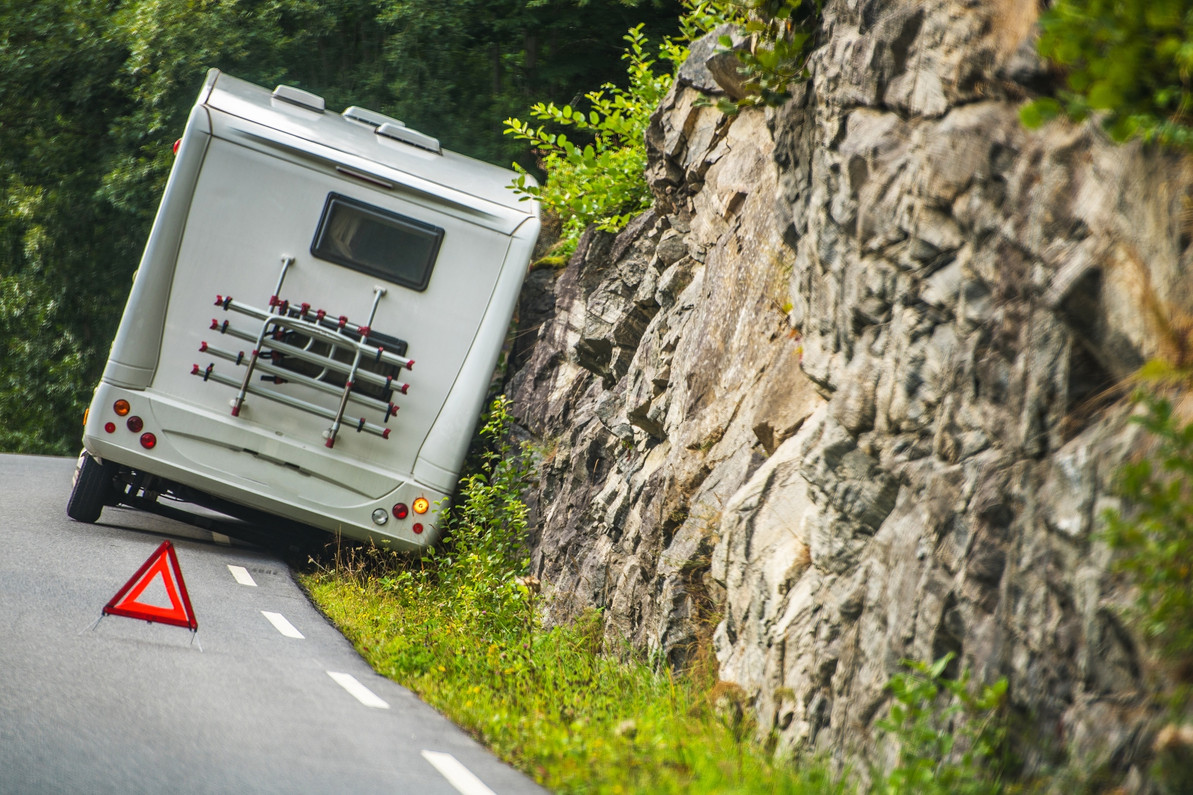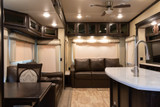In Case of Roadside Emergency
The amount of issues you can tend to on the roadside really comes down to the size of your rig and your comfort level with the necessary repairs. If you have never changed a tire, learning to do so on the side of the road with an oversized vehicle will be a stressful experience, to say the least. Knowing what repairs you can tackle on your own, or learning the basics at home where the stakes are low, can help you feel more confident should anything happen during your travels.
Also, having the right equipment on hand and in a designated spot can significantly reduce the stress you experience at the moment. Keep reading for a list of things to have on hand in case of roadside emergencies and why they are important.
High Visibility Safety Gear
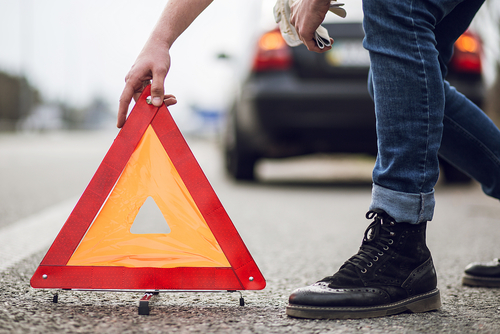
Oncoming traffic must be able to see you to avoid you as a road hazard. In order to remain visible, it is always a good idea to set up safety cones and wear a brightly colored safety vest if you will be working on your vehicle. These measures are in addition to turning on your hazard lights. The old saying, "better safe than sorry," certainly applies here!
Flashlight
You never quite know when you'll need a flashlight, but I can guarantee that it will be helpful at some point during your time as an RV owner. Whether it's a small keychain light or a military-grade tactical light, having something to illuminate your view in the dark is good to have on hand.
Jumper Cables
While you can jumpstart your RV using another vehicle, it is crucial to consider the size of the battery inside of your RV. Larger vehicles require lots of power and therefore have large batteries that generate higher voltage than most passenger vehicles. If you were to hook up your RV battery to the battery inside of your small sedan for a jump, it's possible that your RV battery can fry the sedan battery once started.
To avoid this possibility, many RV owners choose to carry a portable jump starter instead. With this option, you can be sure ahead of time that it is properly rated for your RV engine size.
Oil & Coolant
Engine oil is one of the essential factors in a well-functioning engine. Without adequate quality or quantity of oil, your engine can seize and won't run anymore. While you won't be doing a complete oil change on the side of the road, it's quite possible that you may need to top off your oil. It's always good to check your engine oil and coolant levels and top them off before long trips.
Funnel
When it's time to top off your engine fluids, a funnel can simplify the process and prevent messy spills. If you're carrying around backup engine oil and coolant, it's not a bad idea to have a funnel on hand as well.
Tire Pressure Gauge
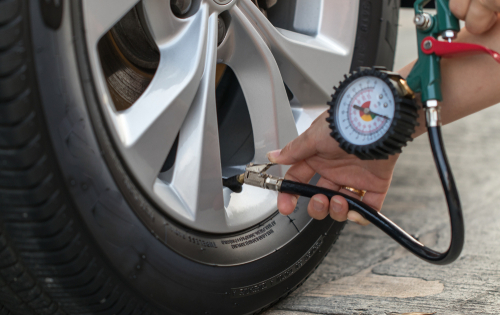
If you only check your tire pressure when the light comes on, you could be compromising your overall driving efficiency. While the light helps prevent major tire issues, it doesn't account for slight changes due to weather and driving conditions. Even if they don't meet the warning threshold, driving on under-inflated tires can negatively impact fuel efficiency. Before a long journey, checking your tire pressure and filling it to the manufacturer's recommended levels for maximum performance is a good idea. For the most accurate reading, you should check your tires in the morning when they are still cold. Heat causes the tires' air to expand, leading to higher pressure, but manufacturer guidelines are based on a cold tire. Another option is an onboard tire pressure monitoring system to monitor the tire pressure at all times.
Portable Air Pump
Some RVs may come equipped with an onboard air compressor, but many do not. RV tires require a much higher PSI than regular tires, so if you carry a portable air compressor with you, it must be capable of reaching the required PSI.
Flat Tire Repair Sealant
In the case of a punctured tire, canned tire repair sealant is sometimes used to allow you to drive back to a repair shop instead of needing a tow. Flat tire repair sealant can sometimes cause more issues though than it solves. This may be an option worth considering for smaller RVs, but for large class A coaches, it is best avoided. The weight of class A motorhomes is greater than most repair sealants are rated for and will only serve to gunk up the inside of the tire, causing issues for the tire repair shop. Even for smaller RVs, you can only use tire repair sealant if the puncture is located on the treads. A sidewall puncture cannot be fixed using this method.
Spare Tire
If you drive a large class A motorhome, chances are you will be calling a roadside emergency service in the case of a flat tire. The equipment necessary to even change a tire is large, specialized, and expensive. Most class A motorhomes don't even come with a spare.
Changing a spare tire is more realistic for those who own a smaller model class B or C. If your vehicle comes with a spare tire, it may also have a bottle jack somewhere onboard. You may feel more comfortable using an upgraded jack, such as a scissor jack or floor jack, for increased stability and rise height. It may seem silly, but try changing your tire at home if you have never done so on your specific vehicle. An unfamiliar mechanism may hold up the spare tire, or the safe lift point for the jack may be different than you are used to. Completing this process at home first will ensure there are no surprises when you go to change it in an emergency.
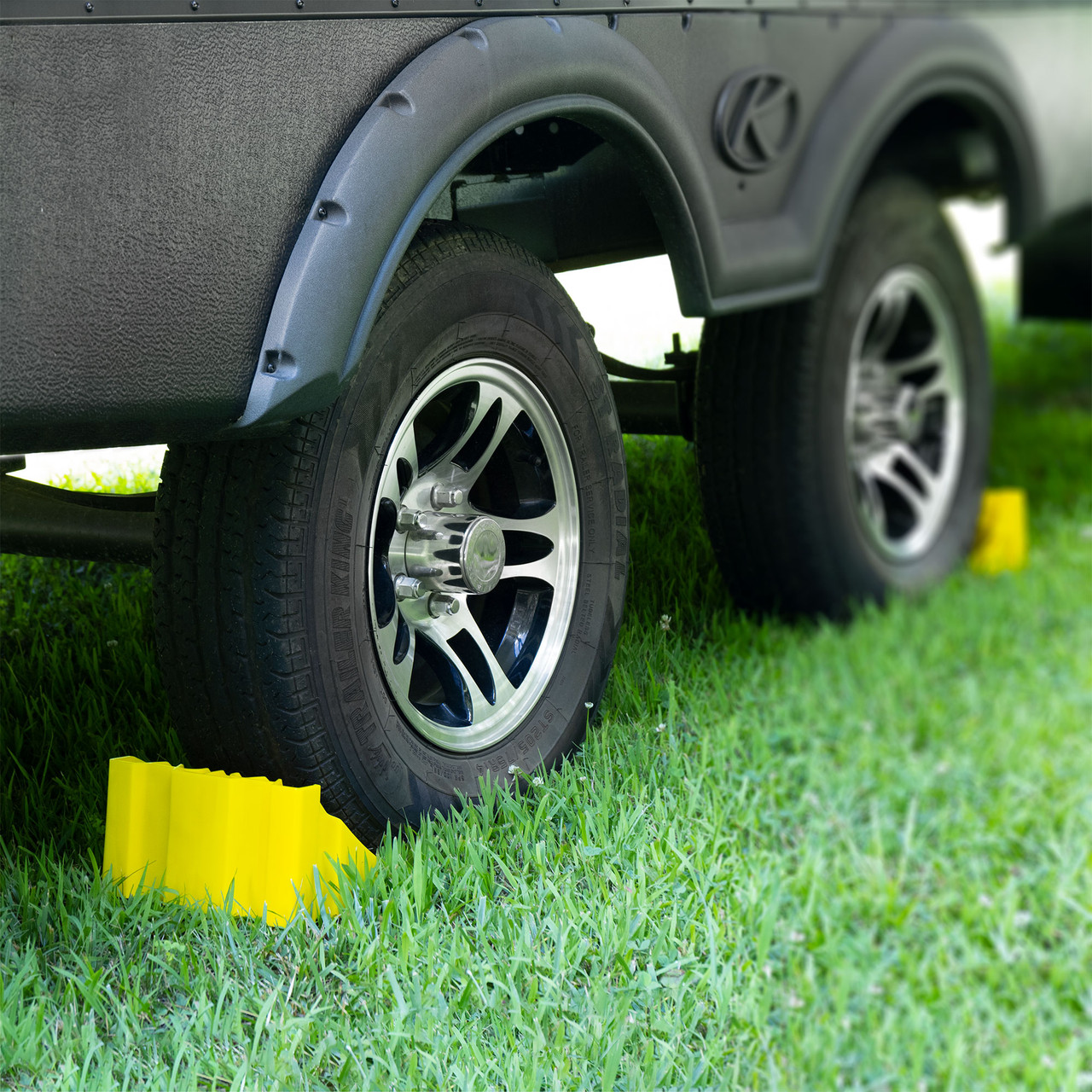
Wheel Chocks
If you need to be on the side of the road for an extended period, whether to do a repair or wait for roadside assistance, you should ensure that your vehicle is safely parked. Wheel chocks stabilize the wheels and prevent them from rolling or shifting. You should already have wheel chocks for parking at campgrounds, but you can also use them in emergencies.
Roadside Assistance
Many RV owners choose to enroll in some type of roadside assistance service. With RV travel, you often end up in unfamiliar places without knowing where repair shops are or what services are even available.
Smaller RVs, such as class B and C motorhomes, are more accessible for self-repairs on the side of the road if you have the right equipment. If you drive a large class A coach, chances are you will be calling roadside assistance in case of breakdown because the equipment necessary, even to change a tire, is large, specialized, and expensive.
What's in your emergency roadside kit? Let your fellow RVers know in the comments down below.
Recent Posts
-
Can You Put Regular Furniture in an RV?
Many new and old RV owners ask themselves this question when they feel the need to update th …Apr 25th 2024 -
4 Tips for Securing RV Furniture While Traveling | RecPro
How To Secure RV Furniture There are few things that beat going out on an adventure with an RV …Apr 25th 2024 -
How To Keep RV Furniture From Peeling
Peeling RV Furniture | Why it Peels and How to Stop it Your RV furniture is a point of pride on yo …Apr 25th 2024 -
Turning up the Heat With an RV Fireplace
There’s an unlimited number of cool and exciting features you could add to your recreational vehicle …Apr 25th 2024 -
How To Install An RV Fireplace
A Warm Addition to Your On-Wheels: The DIY RV Fireplace Installation Guide Many RV enthusiasts ask …Apr 25th 2024 -
Are RV Electric Fireplaces Safe
Being Safe in Your RV with an Electric Fireplace Safety is always going to be one of your highest …Apr 25th 2024

